Interview with Martin Dorchester, CalMac Managing Director
To mark the 40th anniversary of CalMac’s formation in 1973, Martin Dorchester talks about the challenges facing the company — including the competitive tendering process devised by the Scottish Government for a new ferry contract in 2016.
Key points of the interview:
● CalMac is “loudly confident” it will win the next contract for Clyde and Hebridean ferry services, due to be awarded in 2016
● Responsibility for developing successful ferry services lies as much with the communities they serve as with CalMac
● Transport Scotland’s Ferries Plan is “a vision for what you want to achieve” from which “you may at some point deviate”
● The £300m cost of new tonnage to replace CalMac’s ageing fleet over the next decade is a question for the Scottish Government
● A Lochboisdale-Mallaig ferry will only come about if the communities involved can persuade government to invest in it
● Argyll Ferries’ service is “frustrating” for everyone, but government-imposed spending constraints inhibit improvement
● It is too early to tell whether the hybrid form of power installed in the Hallaig and Lochinvar will be repeated in other new-builds
CalMac must develop a more flexible, outward-looking culture if it is to win the next contract for running Clyde and Hebridean ferry services, says Martin Dorchester, chief executive of David MacBrayne Limited and managing director of CalMac Ferries Limited, its wholly owned subsidiary.
Martin Dorchester in his office at Gourock
In an exclusive interview with crsc.org.uk at his Gourock office, Mr Dorchester said the company’s expertise and local knowledge put it in a strong position to secure the contract, due to be decided by the Scottish Government in 2016. But it would have to listen more to its customers if it was not to repeat its Northern Isles experience, where another David MacBrayne subsidiary, NorthLink Ferries Ltd, lost the contract to the Serco Group in 2012. One of the challenges facing CalMac was to see itself as part of a national transport infrastructure — not merely as a provider of essential links for Hebridean communities.
“We need to work more with communities, not just in Islay or Lewis, but in Glasgow and Scotland,” he said. “I inherited a very introverted organisation, maybe because of its long history and the regulated environment in which it has had to work. Now is the time to look outward.”
Mr Dorchester, 49, joined CalMac in April 2012 after a career mainly in the retail sector — with Dixons, Argos, B&Q and Sainsbury. He also worked for the Spicerhaart property group, and was running his own consultancy business at the time of his recruitment by CalMac. The son of a soldier, Mr Dorchester was born in Yorkshire but has lived “on and off” in Scotland for 20 years. He married a Paisley girl (they have three children), settled in Perthshire a decade ago and uses a Glasgow flat while on CalMac business.
Models of the Bute and Finlaggan
at CalMac’s Gourock head office
His appointment marked a change of tack for CalMac. All his predecessors had a Scottish business background, mostly in the transport world. Mr Dorchester had never been directly employed by a transport company, but he did bring extensive experience of working at the intersection of public and private commerce. That must have made him attractive to the David MacBrayne board when it started wondering who could best lead its bid for the next Clyde and Hebridean ferry contract.
Mr Dorchester is well placed to understand the convoluted tender process. From Dixons’ £8bn business he gained an understanding of large public-sector bids and tenders. At Argos he had been responsible for the import of goods by sea from China. He was part of the original team that put together Ofcom, the independent regulator and competition authority for the UK communications industries. In another of his previous jobs, managing fleet transport for the London borough of Hackney, he had responsibility for 1,000-plus vehicles.
Whether Mr Dorchester’s experience has equipped him to manage a government-owned shipping company on Scotland’s craggy west coast (turnover in 2012: £128m) will become clearer in coming months. He shows no sign of being “phased” by the manpower he controls — 800 employees afloat and 400 ashore, including a head office staff of 150, plus 150 seasonal workers. (Since 2006 ships and piers operated by CalMac have been owned by a separate company, Caledonian Maritime Assets Limited.)
Given that two of Mr Dorchester’s immediate predecessors, Phil Preston and Archie Robertson, left abruptly and in quick succession, had the job of running CalMac become a poisoned chalice?
“No. It’s a real challenge” — a word Mr Dorchester used repeatedly in the course of a 75-minute conversation, during which he gave an upbeat assessment of CalMac’s prospects. He said the company had not been ready for competitive tendering in 2006, when it was awarded the first contract only after other bidders pulled out of the process. It was his job to make sure CalMac was “in a fit state” to win the next contract, which was likely to be more keenly contested.
Oban, where CalMac has
‘superior knowledge of the territory’
As the existing operator, did CalMac have an in-built advantage over potential rivals? Mr Dorchester said superior knowledge of the territory was a double-edged sword. As part of the tendering process, CalMac was obliged to put details of everything it did into the public domain. “I have to show the competition my hand before they put in theirs. What I therefore have to do is, first, be careful how I do that, and second, make it as difficult as possible for anybody to better the tender we submit. Because we are government-owned, our profit-driver is not the same as a purely commercial operator [such as Serco].
“Therefore, what we seek to do is to be as commercial as we can, while reinvesting in the routes we serve. That gives us a big advantage in any tender. We have direct access to our customers — our rivals have only second- or third-hand access — but we need to keep listening.”
The other advantage wielded by CalMac was its safety record, “which comes from experience and expertise. At our core is not a commercial imperative but a lifeline imperative. That’s a strength we play to.”
Operational challenges –
Martin Dorchester in discussion with
CalMac Operations Director Brian Fulton
The company he joined 16 months ago had “not truly invested in itself for a long time”. It had limited flexibility in terms of responsiveness to customers, “not because we didn’t want to, but because we didn’t need to. We didn’t have to compete before. We need to be more flexible with timetables, to enable the business to work better.”
He said the process of finessing timetables had begun during the 2012 London Olympics, when fish transporters had been obliged to meet new delivery windows. Working closely with the Western Isles Fishermen’s Association, CalMac “flexed the timetables and did extra runs” on the Stornoway-Ullapool and Tarbert-Uig services. “That probably wouldn’t have happened before. If it did, it would have taken longer.”
While servicing islanders’ links with the mainland remained important, the challenge facing both CalMac and island communities was to generate more traffic in the other direction — from the mainland to the Hebrides, a challenge reflected in recent advertising initiatives. “We’re good at getting people to come to Scotland, but not so good at getting them to go from Edinburgh and Glasgow to the islands. The 2014 Commonwealth Games gives us a great opportunity. The message of our marketing should be that the experience starts as soon as you step on the boat [to the isles].”
Pointing to his position as a non-executive director of Traveline, the online journey planner, he said CalMac was working with ScotRail and FirstGroup to develop ways of integrating transport across Scotland. “How do we get someone coming from New York to Islay to book as seamlessly as possible? Building that sort of infrastructure wasn’t on the agenda 15 years ago.”
Asked whether the Scottish Government’s proposed six-year ferry contract offered a long enough timeline to invest in a capital-intensive business, Mr Dorchester suggested there were advantages and disadvantages in such a short time-frame. “Six years keeps you very competitive, but we run heavily capital-intensive rolling stock which needs significant investment. In some scenarios you’d want longer, but the longer the contract, the bigger the pool you’d be competing against [to win it]. Serco would be only one of many.”
One of the problems of running a state-owned service is accountability — not just to the Scottish Government but to the island communities CalMac serves, opening the company to all sorts of political pressures, local and national. Surely this is a no-win situation?
Mr Dorchester, who sets aside two days a month to visit island communities, argues that “you face the same challenge in any organisation. At Dixons, people would go to the board, they would go to the big shareholders [to try to influence management policy]. At CalMac we’re getting better at saying what we can do and what we can’t do. It’s about dialogue and communication, about operating to the parameters — and if they need widening, you push them. I probably have less contact with Edinburgh than people would imagine.”
David McGibbon,
chairman of David MacBrayne Ltd
Such arm’s length supervision is partly predicated on the make-up of CalMac’s government-appointed board. Two of its directors live on the islands, three are civil engineers (one with a background in shipbuilding) and two are former finance directors of major companies. “We’ve got a lot of expertise. I report to the board and we make decisions. We have a contract with Transport Scotland [the government-run national transport agency] and we sit down with them once a month to examine if we are delivering what we said we would.”
The two bodies hold a separate meeting every three months to discuss long-term strategy. Meetings with Transport Minister Keith Brown take place twice a year. “They’re not breathing down our necks every week.”
Nevertheless, proposals laid out in Transport Scotland’s Ferries Plan (2013-2022), published last December, offer a blueprint for the future that CalMac cannot ignore. Mr Dorchester describes the Ferries Plan as “a route map to start working with” rather than a prescriptive target. “It opens up a dialogue of how you develop ferry services. It creates an opportunity to try things, [the Isle of Arran’s new service to] Campbeltown being a good example. What it says to me is that the Scottish Government recognises that any investment in ships or port infrastructure is a long-term play. Transport Scotland are open to being flexible. It’s a “plan”, a vision of what you want to achieve. At some point you may deviate, but you always have an end-goal in sight.”
The Ferries Plan envisages a three-year trial for the Campbeltown summer service, with the possibility of it becoming year-round if the trial is successful. Does CalMac’s experience of the run so far make this likely?
The Isle Of Arran,
CalMac’s Campbeltown ferry
Mr Dorchester says it is too early to judge, but the Kintyre town has done “everything it possibly can” to make the service successful. He sees the Campbeltown trial as a template for the development of further routes. “What I say to communities [throughout the Clyde and Western Isles] is that the ferry is only one element of a bigger piece. The way to make the ferry successful is as much about what the community does as about asking CalMac to run a ferry there. It’s about working together. If the only element we focus on is the ferry, it will not work — it won’t be enough [to make it viable].”
Does this mean that advocates of a service linking Lochboisdale and Mallaig have his backing? “My challenge to them is: they need to talk to MSPs and the local council, and build a case for that route [by winning political backing for expenditure]. We are a ferry operator. If asked to do a service, we will study how it might be done, and if there’s a case, we’ll do it.”
On the question of rolling out Road Equivalent Tariff (RET) across the CalMac network, as envisaged in the Ferries Plan, surely the demand created by cheaper fares will create pressure for more frequent services — necessitating more ships and a bigger payroll? Such a development is already implicit in the Plan’s vision for Arran and Mull, both of which are to have a two-ship service.
While arguing that there were limits to the frequency of service CalMac could provide to isolated communities, Mr Dorchester said Colonsay was an example of how “we can use our experience to do things differently”. RET had resulted in “a bigger uplift in traffic [to Colonsay] than we expected. We can use other units of the fleet or other ways to increase frequency and/or capacity” — the implication being that CalMac would prefer to “flex” the routes of big ferries (such as those servicing Port Askaig) than transfer the Lochnevis from the Small Isles to Colonsay, which is the Plan’s preferred solution.
Should the Ferries Plan target of £300m expenditure on new tonnage over the next decade be regarded as realistic or wishful thinking? Mr Dorchester’s answer suggests everything boils down to political will. “Ask the Scottish Government. Anyone who looks around the entire network, and the ageing infrastructure of Scotland’s ports and harbours, will see that any infrastructure project carries a huge cost.”
The Ali Cat,
a source of ‘frustration’ at Dunoon
Mr Dorchester, a non-executive director of Argyll Ferries Limited, was reluctant to comment on the Gourock-Dunoon route, preferring to await the results of a Transport Scotland feasibility study. Was the apparent unreliability of the service a thorn in his flesh? “I would not say that. It’s a challenging operation. The past winter was one of the worst we have encountered. I can understand the frustrations in Gourock and Dunoon. I’d be frustrated. We’re doing the best we can with the resources we have. If I can invest more [in the service], I will. One of the things people have to realise is that the Clyde and Hebridean ferry contract imposes spending limits. We have to manage as best we can within those constraints.”
Had Argyll Ferries considered hiring sturdier craft for the service — such as the Balmoral? “We looked at the Balmoral, but it would have been a challenge, to say the least, in terms of what you’d need to spend to keep her running at a level you would want. [Finding suitable craft] is a challenge in terms of the tonnage that’s available.”
The Isle of Lewis
leaves Stornoway
Asked about the Isle of Lewis’s redeployment when the new Loch Seaforth takes over at Stornoway next summer, Mr Dorchester said “we are still looking at that. There are multiple opportunities. The obvious route [for the Isle of Lewis] is Mull, but we’d have to shift the loading doors [to fit existing terminals there]. It sounds a big thing, but it’s only a matter of cutting steel. The challenge would come if we then needed to redeploy her back to Ullapool-Stornoway [for relief work]. We’re working through that now.”
The Hallaig and Lochinvar
fitting out at Fergusons, Port Glasgow
Should the Hallaig and Lochinvar be seen as the start of a new form of propulsion for the fleet, or is their hybrid power system purely experimental? “I don’t yet have a boat on the water to test it. We’d like to have a season under our belt before taking it further. Around the world at the moment we’re looking at various possibilities in terms of reliability, fuel control and emissions control.”
Is it true that CalMac is considering the privatisation of on-board catering? “I’d never say never, but we haven’t seen any compelling case to outsource it. We do a good job. There are many benefits in doing it ourselves, such as [the security implications of maintaining] muster lists.”
CalMac catering (on the Isle of Lewis) –
‘I’d never say never’
He said CalMac was soft-testing Wi-Fi on two of its ships — which he declined to name — in the hope that it could eventually be rolled out across the fleet. A plan to conduct a “full-blown” test on the Hallaig had been unavoidably delayed until the end of the year, and another “Loch” class ferry was now being considered for the test.
Mr Dorchester acknowledged that in recent years CalMac had had difficulty recruiting suitably experienced staff to lead its marine and technical departments, partly because the company’s 70 masters were reluctant to give up their privileges in return for a shore job. He said a new “head of marine” role, suitable for a senior master, was being created to run a “much larger team” at the company’s Gourock headquarters.
Martin Dorchester (left) with
CalMac Operations Director Brian Fulton
Mr Dorchester comes across as a man who, while careful not to divulge sensitive information, has an excellent grasp of the political and commercial pressures facing CalMac, and thinks in terms of the big picture. Is he quietly confident CalMac can come out on top of the government’s tendering process? “Loudly confident,” is his reply.
Martin Dorchester was speaking to CRSC magazine editor Andrew Clark at the end of June 2013
This is the first interview in a short series marking CalMac’s 40th anniversary.
Sign up for CRSC membership and further your interest in Scottish shipping.
The second in this series of interviews, with Guy Platten, Chief Executive of Caledonian Maritime Assets Ltd (CMAL) can be read here












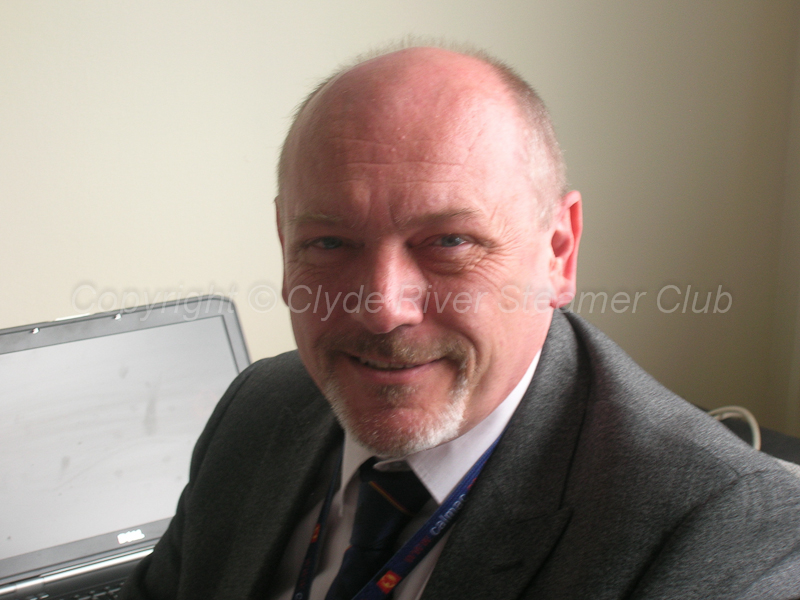
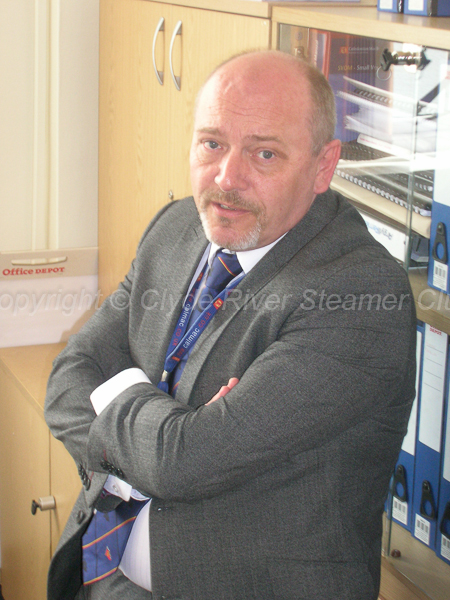
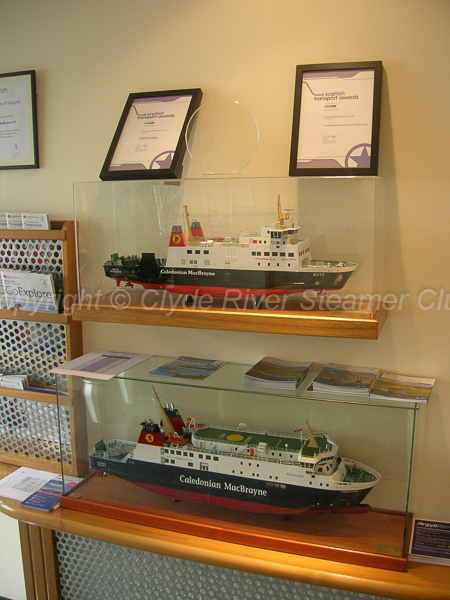
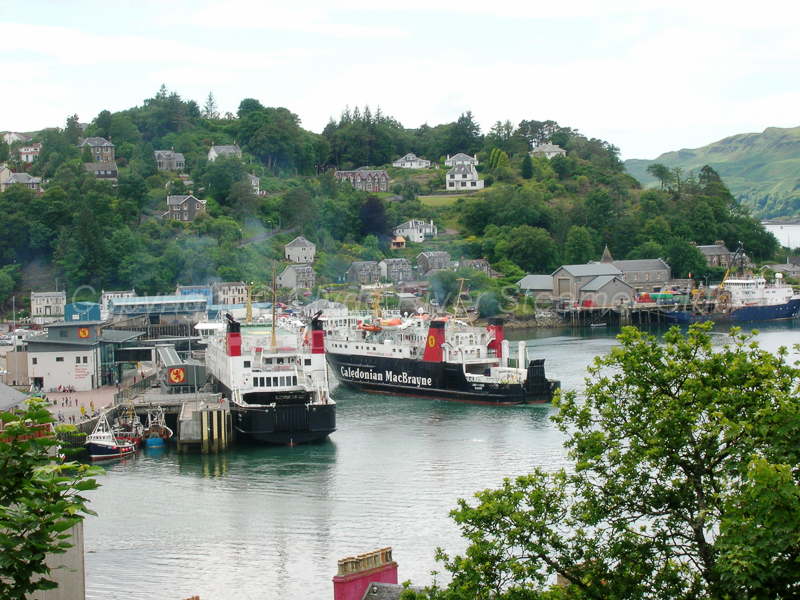
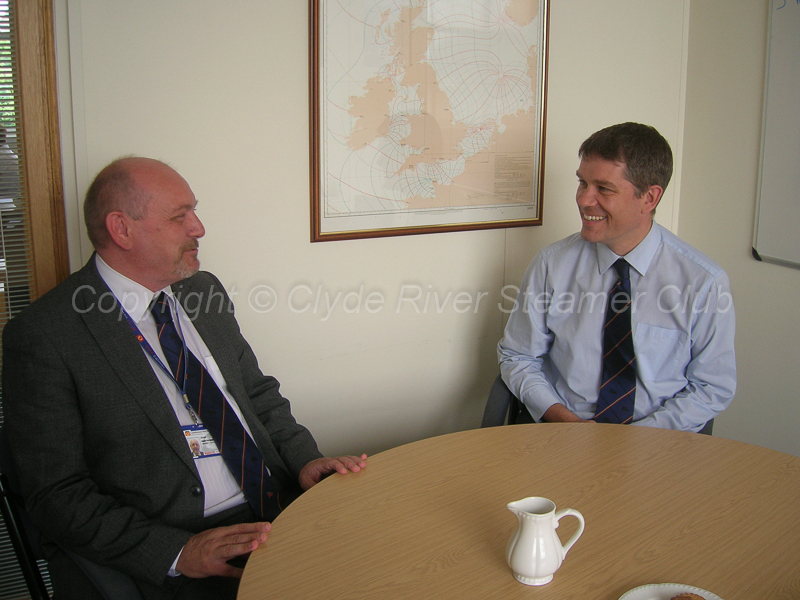
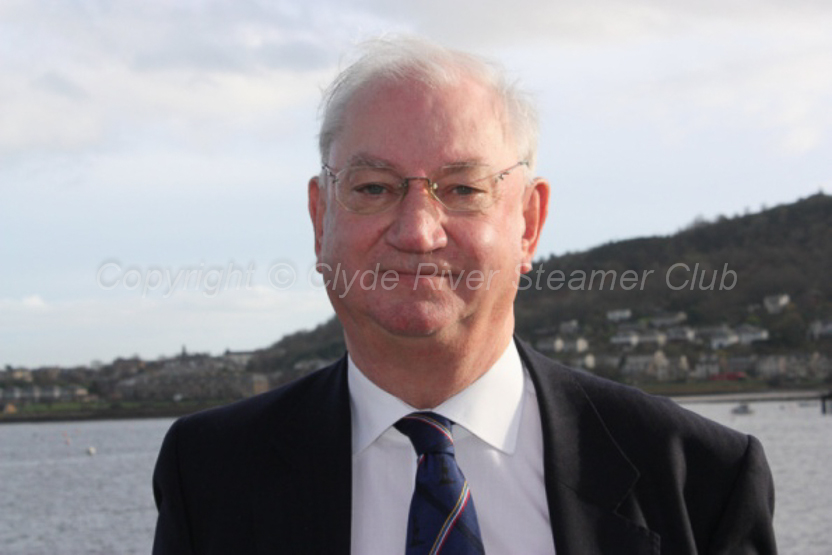
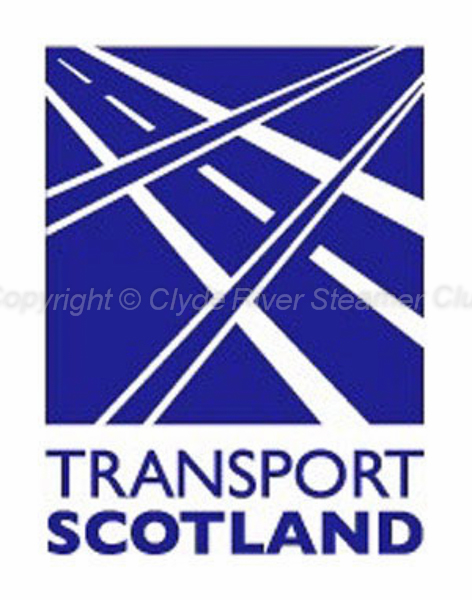
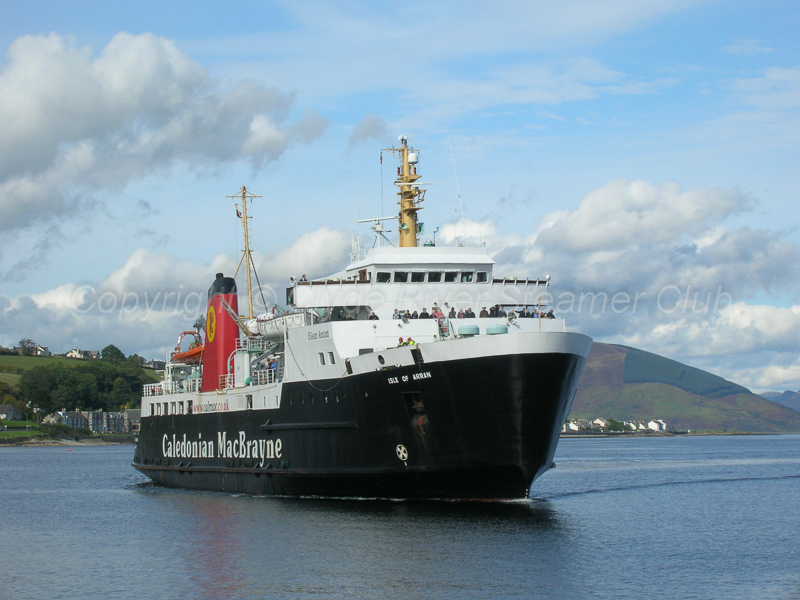


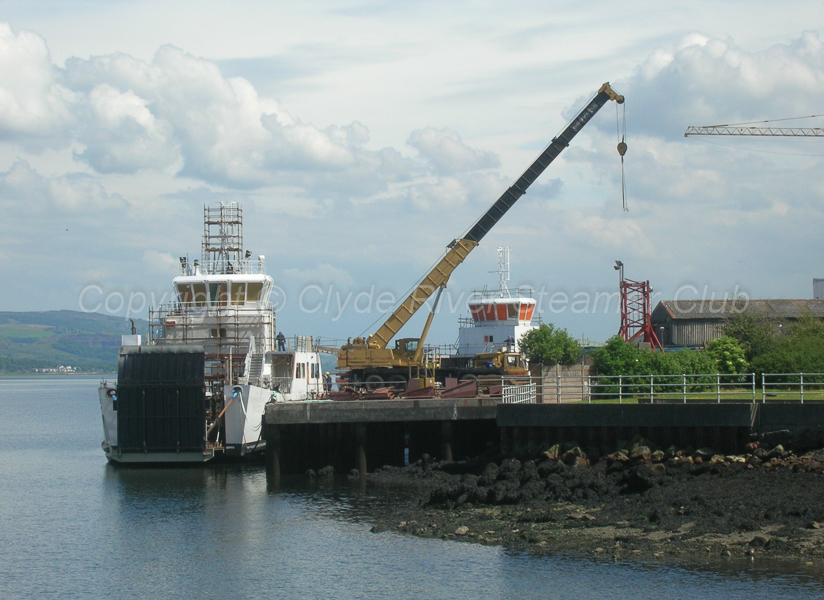
 - 'I'd never say never'-2.jpg)
 with CalMac Operations Director Brian Fulton-2.jpg)